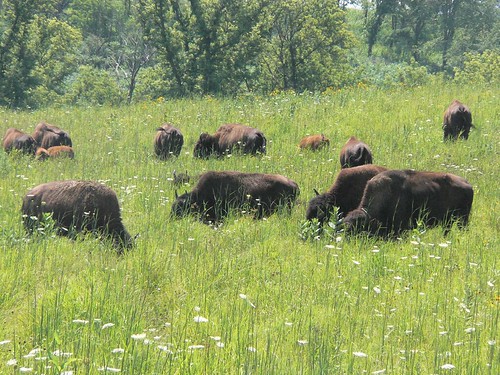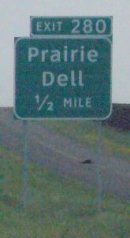 From the MIT Technology Review article "The Price of Biofuel":
From the MIT Technology Review article "The Price of Biofuel":
"Blooming Prairies: Whether ethanol made from cellulosic biomass is good or bad for the environment, however, depends on what kind of biomass it is and how it is grown.
In a series of tests, Tilman grew a mixture of native prairie grasses (including switchgrass) in some of the field’s plots and single species in others. The results show that a diverse mix of grasses, even grown in extremely infertile soil, "could be a valuable source of biofuels," he says. "You could make more ethanol from an acre [of the mixed grasses] than you could from an acre of corn." Better yet, in a paper published in Science, Tilman showed that the prairie grasses could be used to make ethanol that is "carbon negative": the grasses might consume and store more carbon dioxide than is released by producing and burning the fuel made from them." "


 The
The  Butterflies like the Monarch have always been one of my favorite parts of the prairie.
Butterflies like the Monarch have always been one of my favorite parts of the prairie.



 In Texas, prairie lives on only in name in many places. In my experience, most people living in tallgrass prairie ecoregions aren’t aware they live in such a region, don’t know it is an endangered ecosystem, and have never seen the beauty of tallgrass prairie.
In Texas, prairie lives on only in name in many places. In my experience, most people living in tallgrass prairie ecoregions aren’t aware they live in such a region, don’t know it is an endangered ecosystem, and have never seen the beauty of tallgrass prairie.